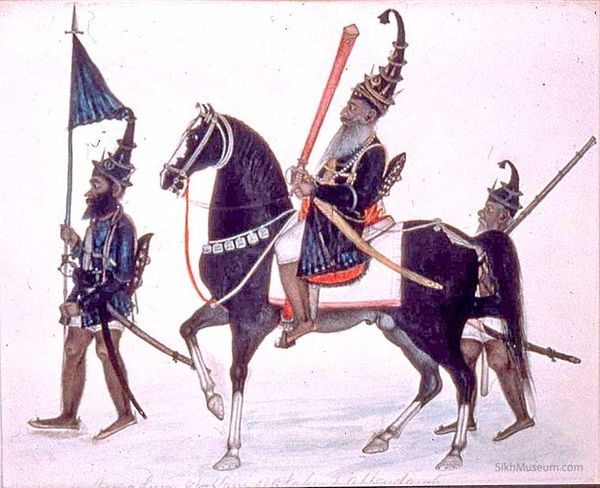“When they take up a musket in hand at the time of battle, they come to the field fiercely springing and roaring like lions and immediately split many a chest and make the blood of many others spill in the dust. You may say that this musket was invented by these dogs (Sikhs). Though guns are possessed in large numbers by others, yet nobody knows them better. These bad-tempered people discharge hundreds of bullets on the enemy on the right and left and in front and on the back. If you disbelieve in what I say, enquire from the brave warriors who will tell you more than what I have said and would have nothing but praise for their art of war. The witnesses of my statement are those thirsty thousand heroes who fought with them.” ~ Qazi Noor Mohammed, 1765

The period between the 17th and 18thcentury was a period of great mayhem and depression in North India. The area was ruled by Moslem rulers and they created lot of problems and difficulties for the Hindu subjects, no wonder, Hindus were given a second class status on their own land.
It started with the rise of Aurangzeb where all his policies were mostly Anti-Hindu. The tax for non-Muslims, the Jizzia tax which was abolished by Akbar was again imposed, Hindu women were abducted and raped, Hindu women were prohibited from being carried in palanquins children were killed and forceful mass conversion had become a common practice. In addition, all the people working in the state was compelled to convert into Islam, under the agony of dismissal. People who refused were stripped off from their position. If that was not enough, in the year 1675, Guru Tegh Bahadur,the ninth guru was given a choice of embracing Islam or face death penalty. He chose and later and so was beheaded by Aurangzeb, further terrorizing the Hindus to convert into Islam.
Sikhism: The Making of Khalsa
This created a rage among Sikhs and so the 10th Guru, Guru Gobind Singh took the mission of reviving both the Sikh and Hindu masses. At a huge congregation at Anandpur Sahib in Punjab, the Guru appeared on a stage with his naked sword addressing the crowd and asked for a volunteer who was ready to surrender his life for Panth, their religion. A man stood up and he was taken back stage and Guru returned alone with his sword dripping in blood. It was obvious that the man was beheaded. Guru asked if anyone else was ready too. The second volunteer came in readily and again the Guru returned with his sword dripped in blood. This continued till 5 volunteers joined in.
After the last i.e. the 5th man was taken behind the stage, he returned with all the five men. The men were not killed but a goat was sacrificed every time. These 5 men were later given prasads and were baptized by the Guru to keep the five K’s of Khalsa – Kesh (Hair), Kanga (Wooden Comb), Katchera (Cloth), Kada (Steel Bangle) and Kirpan (Sword). In the Sikh history, these five men are famous in the name of 5 loved ones or Punj Pyara. This was the day when the 10th guru created Khalsa to fight against the Muslim bigots.
The Sacrifice, the Persistence and the Rise…
Guru Gobind Singh had 4 sons. All were martyred in battle but he was not the one who could easily give up. He remained strong in spite of all the personal losses for the common interest. In his last testimony, he then ended the Guruship and ordered that henceforth the Granth would be considered Guru. He also appointed Banda Singh Bahadur as his successor.
At last, Guru’s thinking was brought into action by his successor. In 1798, the Muslims were defeated by Raja Ranjit Singh and Sikh power revived in Punjab out of the Muslim intolerance and fanaticism.


